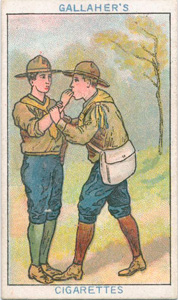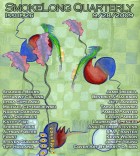“This is what it has come to. This is what works for me.” I love this ending, because the narrator sounds so satisfied with having found the eye. I would have expected this flash to end on a more sinister note, but this last sentence sounds almost wholesome, at least to me! Do you agree with this? What was your intent with this last line (if writers can be said to have a clear-cut reason for every decision they make, which is a topic in itself)?
I like it that you found this ending “wholesome.” And the fact that you had that response means that your response is correct, at least as far as I’m concerned. I’m not keen on the idea of stories being restricted to one interpretation. My goal is to get a response from the reader. I try to make my last lines (which assume so much weight in flash fiction) open enough to be read several different ways. The only reader response I don’t want is “huh?” That means the story isn’t working at all.
Another aspect of this piece I find intriguing is the way the narrator is characterized indirectly through the situations s/he finds him-/herself in, and the effect of the eye. Can you share some ideas about who this character is outside of the confines of the story, or should this remain a secret?
In my mind, this is a character who functions outside of “successful” society. S/he finds it hard to interact with people and feels as if life is something that happens without any sort of control. I once read an article about how most people are extroverts and that’s the way the world is set up and how everyone is expected to function. To me, this is a character who is trying to come to grips with his/her minority status. Mind you, I’ve had readers say the character seems to be unbalanced, almost crazy. And that works, too. BTW-I love it that you noticed that the character could be male or female. I do that a lot in my writing. Wish I could say it was intentional, but it just seems to happen. Clarifying the character’s gender somehow feels like it clutters up the story.
You’re not only a writer. You’re also enjoying success creating linoleum block prints. I explored some of that work on your excellent website, www.foustart.com. Do these two aspects of your creative life inform each other? I’m specifically asking because some of the prints are connected by a common theme; e.g. “Phobias,” “7 Deadly Sins,” and “Apartments.” Do you follow a similar approach in your writing of flash fiction?
Hey, thanks for visiting! Yes, there’s definitely a connection. When I’m doing visual art, I’m often telling myself a story while I work through a piece. Maybe I’ll create a character and then put the character in a situation to see what happens. I do that both with writing and with printmaking. Unfortunately, though, I’ve found that I have a hard time working on art and writing at the same time. When one flourishes, the other suffers. They must both come from the same place in my brain. Wish I could move one to the place where the math is supposed to be. There’s not a lot going on over there.
Having read a sample of your work as part of your application for the Fish Fellowship, I can’t help but wondering whether you’re planning on putting together a collection of flash fiction—perhaps with your own illustrations?
Yes, I’d love to do that. I’ve also considered doing it “backwards”—writing stories to go with the images I already have. I worked up a graphic version of one of my existing flash stories and found that the writing had to be rethought when I married it with a visual. I’d like for the words and pictures to do a roughly equal amount of the work—I don’t want the finished graphic story to feel like it could be pulled apart and become two separate entities, one of pictures and one of words.



 The core workshop of SmokeLong Fitness is all in writing, so you can take part from anywhere at anytime. We are excited about creating a supportive, consistent and structured environment for flash writers to work on their craft in a community. We are thrilled and proud to say that our workshop participants have won, placed, or been listed in every major flash competition. Community works.
The core workshop of SmokeLong Fitness is all in writing, so you can take part from anywhere at anytime. We are excited about creating a supportive, consistent and structured environment for flash writers to work on their craft in a community. We are thrilled and proud to say that our workshop participants have won, placed, or been listed in every major flash competition. Community works.